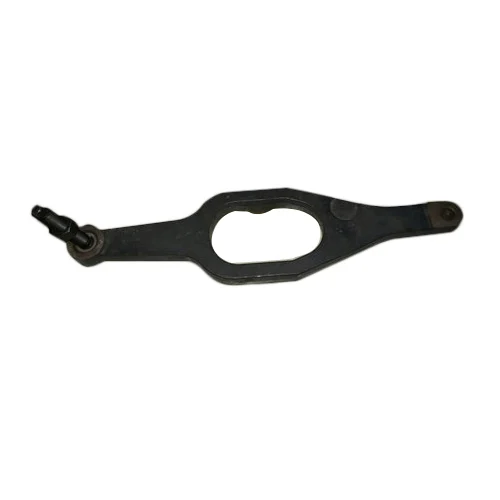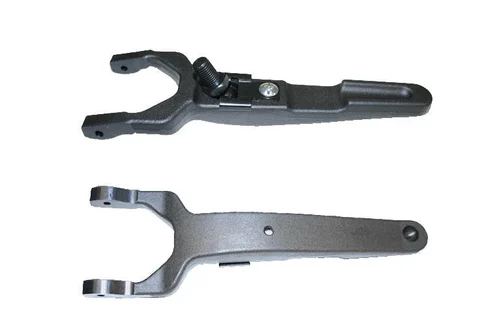What is the clutch fork?
The clutch fork and connecting linkage convert the movement of the clutch pedal to the back and forth movement of the clutch throw-out bearing. To disengage the clutch, the release bearing is moved toward the flywheel by the clutch fork.
A clutch fork is a component in a clutch system used to help engage and disengage the clutch. It is the component that helps to convert movement for when clutch pedal is pressed to the actual disengagement of the clutch.
A clutch fork is a component of a manual transmission system that is responsible for engaging and disengaging the clutch. The clutch fork is typically made of durable materials like steel and is mounted on a pivot point located on the transmission bell housing.
When the clutch pedal is depressed, the clutch fork pivots forward and engages the release bearing, which in turn disengages the clutch. This allows the engine’s power to be transferred to the transmission, which enables the vehicle to move.
When the clutch pedal is released, the clutch fork pivots backward and disengages the release bearing, which allows the clutch to engage. This separates the engine’s power from the transmission, which prevents the vehicle from moving.
The clutch fork is an important component of the manual transmission system, and any issues with it can cause problems with the vehicle’s ability to shift gears or move smoothly. If any issues or damage are detected, the clutch fork should be inspected and repaired or replaced by a qualified mechanic to ensure the proper functioning of the transmission system.
Regular maintenance and inspection of the clutch fork are essential for ensuring the proper functioning of the transmission system and preventing any potential damage or wear. Proper lubrication of the pivot point and other associated components is also important for ensuring the smooth operation of the clutch fork.
The clutch fork is a critical component of a manual transmission system, and it provides several benefits, including:
- Smooth gear shifting: The clutch fork, along with the other components of the clutch system, allows for smooth gear shifting by disengaging and engaging the clutch. A properly functioning clutch fork ensures that the clutch is released and engaged smoothly, allowing for smooth shifting between gears.
- Improved fuel economy: A properly functioning clutch fork can help to improve fuel economy by ensuring that the engine’s power is efficiently transferred to the transmission. When the clutch is properly engaged, the engine’s power is transferred to the transmission smoothly and efficiently, reducing fuel consumption.
- Longer clutch life: The clutch fork, along with the other components of the clutch system, helps to extend the life of the clutch. By ensuring that the clutch is engaged and disengaged smoothly, the clutch fork helps to prevent unnecessary wear and tear on the clutch, prolonging its lifespan.
- Enhanced driving experience: The proper functioning of the clutch fork can greatly enhance the driving experience by ensuring that gear shifting is smooth and effortless. This can improve overall vehicle performance and make for a more enjoyable driving experience.
- Increased safety: A properly functioning clutch fork is essential for safe operation of the vehicle. Any issues with the clutch fork can cause problems with the vehicle’s ability to shift gears or move smoothly, potentially leading to unsafe driving conditions.
The clutch fork plays a critical role in the proper functioning of a manual transmission system. Regular maintenance and inspection of the clutch fork are essential for ensuring its proper functioning and preventing any potential damage or wear that can affect the vehicle’s performance and safety.



